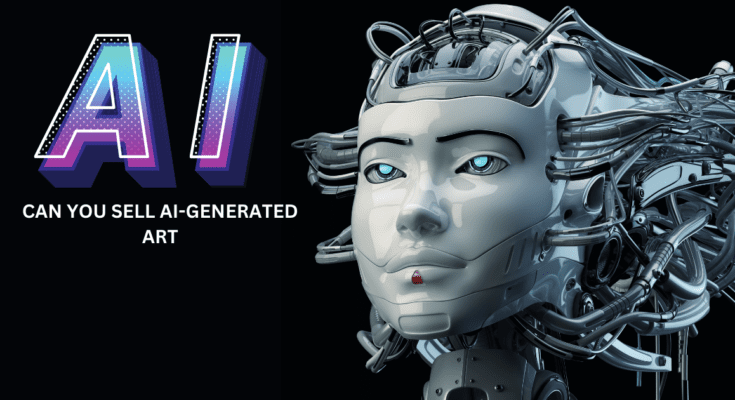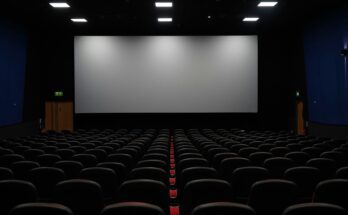Can you Sell AI-generated art? This alludes to artwork made utilizing artificial intelligence algorithms. This progressive approach to art has generated significant interest in the art world, testing conventional notions of imagination and origin. The pertinence of AI art is developing as technology progresses, making it a vital subject for present-day artists, gatherers, and devotees.
Verifiable Development
The excursion of AI in art started with early examinations in computer-generated illustrations during the mid-twentieth 100 years. Artists and software engineers utilized essential algorithms to make examples and shapes, laying the foundation for more mind-boggling AI art. Over the long haul, headways in AI and brain networks have permitted AI to create progressively refined and stylishly satisfying artworks.
Types and Styles of AI Art
Conceptual
Unique AI art includes forming non-illustrative pictures, often utilizing algorithms that create random or procedural examples. These pieces can evoke many feelings and translations similar to conventional, unique art.
Practical
Practical AI art aims to reproduce or recreate certifiable scenes and items with high precision. This style often uses profound learning methods to examine and reproduce complicated details, creating similar pictures.
Generative Art
Generative art utilizes algorithms that independently create unique pieces in light of set boundaries. Artists input specific guidelines and constraints, permitting the AI to investigate imaginative conceivable outcomes inside those limits.
Style Transfer
Style Transfer includes applying the tasteful components of one artwork to another and mixing content and style through brain organization. This strategy can create dazzling cross-breeds, blending the pith of various artworks into a solitary piece.
Strategies Utilized in AI Art Creation
Brain Organizations
Brain networks are computational models propelled by the human brain, equipped for learning and simply deciding. In AI art, they break down immense measures of information to perceive designs and produce new artworks.
GANs (Generative Antagonistic Organizations)
GANs comprise two brain organizations: a generator and a discriminator. The generator makes pictures while the discriminator assesses them. Through iterative cycles, GANs produce profoundly refined artworks.
Profound Learning
Profound learning includes training brain networks on considerable datasets to perform complex assignments. In art, profound learning empowers the formation of unpredictable and detailed pictures, often undefined from those made by human artists.
AI Algorithms
AI algorithms utilize measurable procedures to work on their presentation after some time. These algorithms can be trained to perceive artistic styles, produce new examples, and even copy the strategies of renowned artists.
Eminent AI Artworks and Artists
AI-generated art has gained acknowledgement in different esteemed exhibitions and sales. Eminent artworks incorporate “Edmond de Belamy,” made by the Paris-based aggregate Self-evident, which sold for $432,500 at Christie’s sale. Artists like Mario Klingemann and Anna Ridler have additionally made significant commitments, pushing the limits of what AI can accomplish in art.
Uses of AI Art
Advanced Displays
Advanced exhibitions are virtual spaces where AI-generated art is shown and sold. These platforms offer a worldwide crowd and openness, permitting artists to arrive at potential purchasers without geological constraints.
Advantages of AI-Generated Art
Availability and Inclusivity
AI art democratizes the creation interaction, permitting anybody with access to essential devices and technology to deliver artwork. This inclusivity encourages various voices and styles in the art world.
Cost-adequacy
Making art with AI can be more practical than conventional techniques, decreasing the requirement for actual materials and studio space. This moderation makes it more accessible to a broader audience.
Advancement and Innovativeness
AI carries additional opportunities for inventive strategy, empowering artists to investigate uncharted regions and trial with novel methods. This development drives the advancement of art, persistently pushing the limits of inventiveness.
Challenges and Moral Contemplations
Genuineness and Inventiveness
The topic of validity emerges when considering AI-generated art. Pundits contend that AI lacks the human touch and close-to-home profundity of customary art, testing its inventiveness and artistic worth.
The Artist’s Job and Worth
The job of the artist is re-imagined about AI art. While some view AI as an instrument that upgrades inventiveness, others dread it might decrease the artist’s worth and commitment to the innovative flow.
Marketing AI Art
Powerful Marketing Strategies
Marketing AI art requires a mix of customary and computerized procedures. Building serious areas of strength for a presence, drawing in with art networks, and utilizing social media are urgent steps to reaching potential purchasers.
Building a Crowd of People
Artists can assemble a group of people by displaying their work on different platforms, participating in shows, and teaming up with artists and tech enthusiasts. Reliable commitment and quality substance are critical to growing an unwavering following.
Using Social Media and Online Platforms
Social media platforms like Instagram, Twitter, and TikTok are integral assets for advancing AI art. Artists can share innovative strategies, cooperate with fans, and direct people to their deals platforms.
Future Prospects of AI Art
Expectations and Patterns
Specialists anticipate that AI will continue to advance, offering more complex instruments for artists. Patterns like increased reality (AR) and augmented reality (VR) coordination with AI art are supposed to gain footing, giving viewers vivid encounters.
Potential Headways in AI Technology
Headways in AI technology will improve the capacities of art creation, empowering more multifaceted and customized artworks. As AI becomes more natural, the coordinated effort between human artists and machines will develop, prompting uncommon artistic articulations.
The Future Job of AI in the Art World
AI is set to assume a significant role in the store for art, filling in as both a device and a teammate. Mixing human inventiveness and artificial intelligence will rethink the limits of art, opening additional opportunities for articulation and translation.
Conclusion
AI-generated art is an entrancing and developing field that challenges customary ideas of imagination and creation. While it offers various advantages, it presents extraordinary difficulties and moral contemplations. As technology progresses, the future of AI art looks encouraging, with vast opportunities for advancement and articulation. Embracing AI-generated art can prompt new artistic skylines and advance our understanding of imagination in the computerized age.






